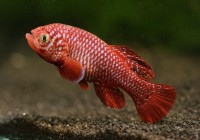Frontiers of Retrovirology Conference 2013

This year, the Frontiers of Retrovirology conference was held in the historic city of Cambridge and was a great success. A selection of the world’s leading researchers in human and animal retroviruses delivered inspiring and exceptional talks. Throughout the event, tributes were paid to Kuan-Teh Jeang, founder of the conference and of Retrovirology,… Read more »







